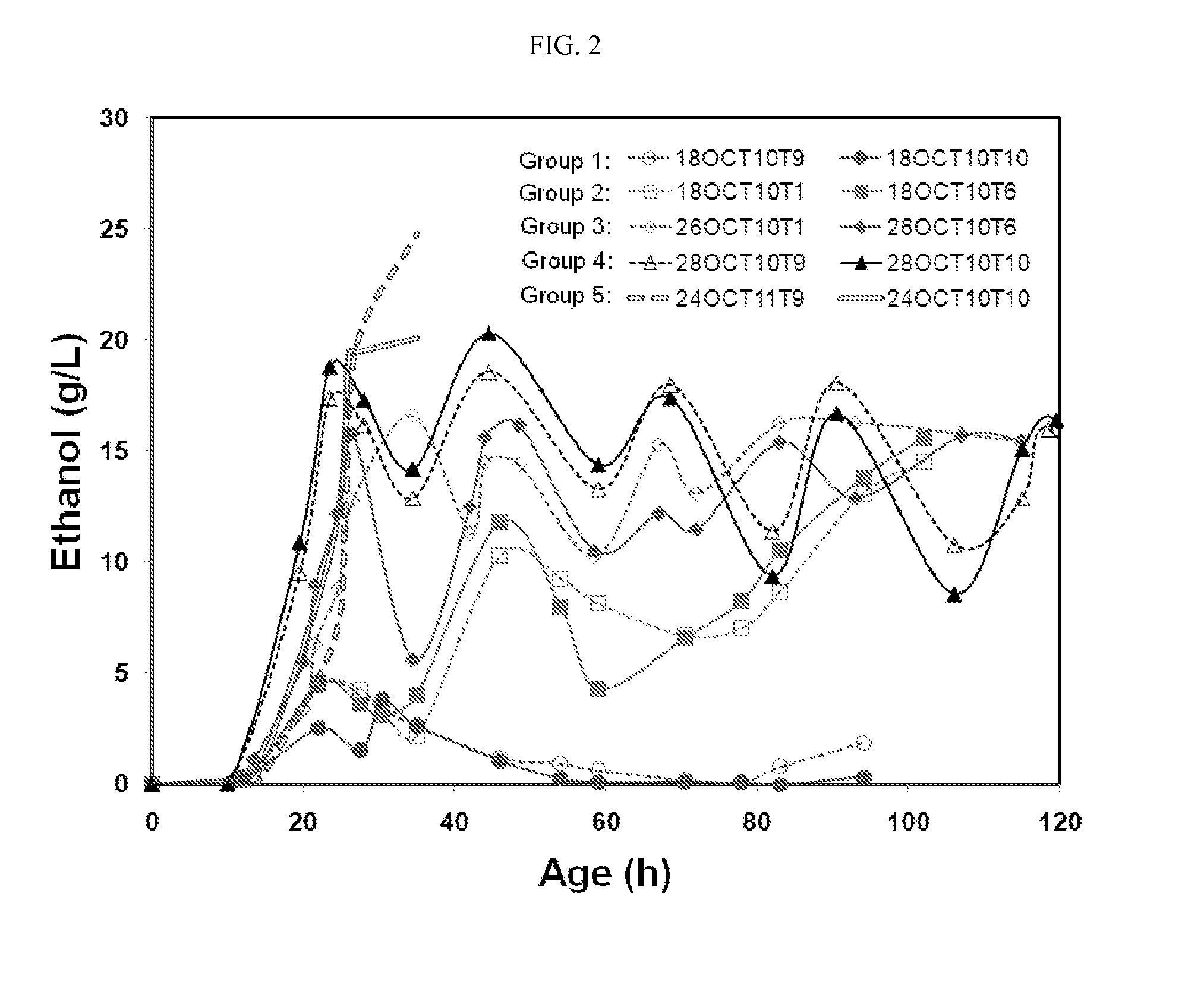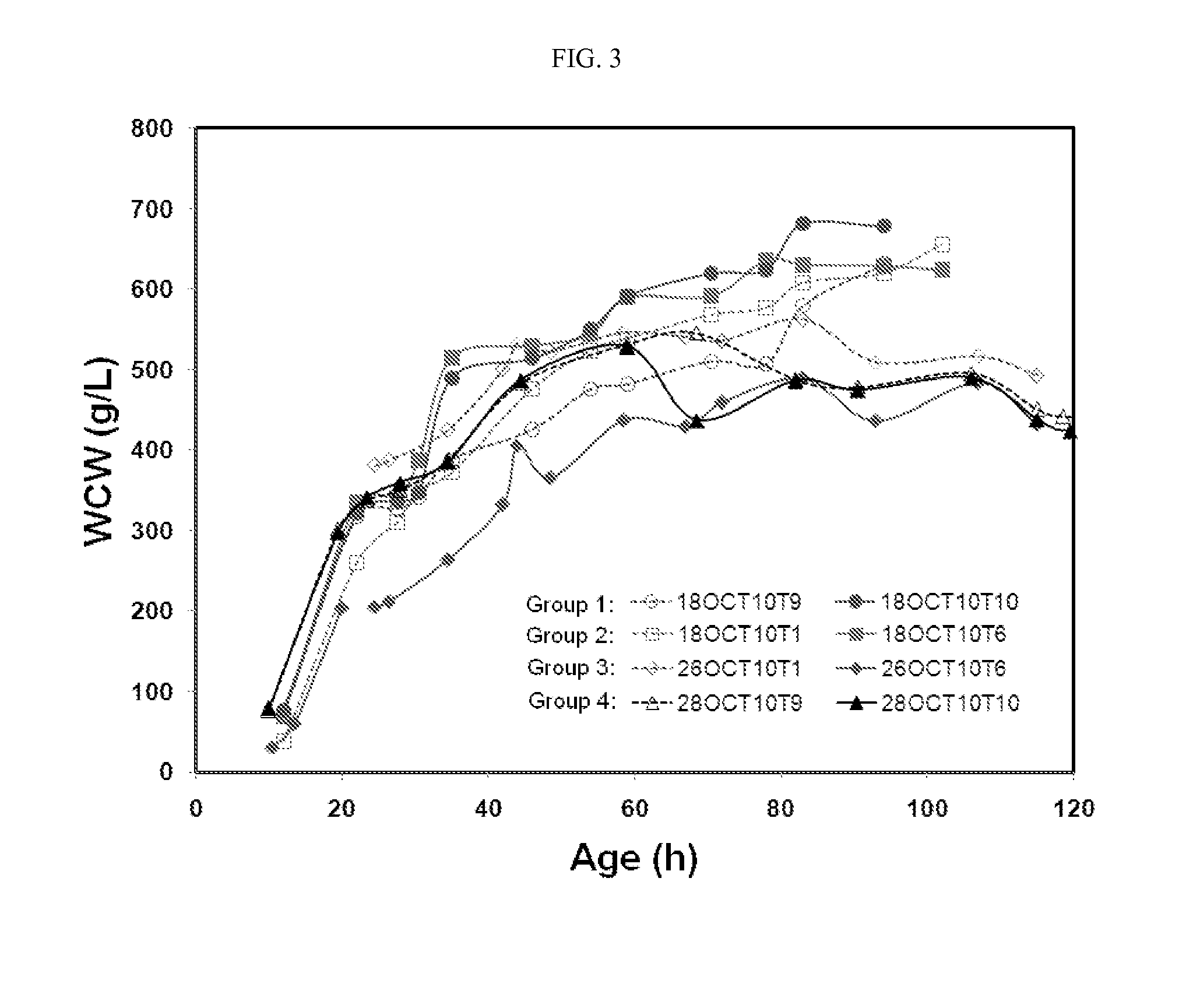Methods of producing antibodies in yeast
a technology of yeast and antibodies, applied in the field of yeast antibodies, can solve the problems that the economics of producing antibodies becomes an important issu
- Summary
- Abstract
- Description
- Claims
- Application Information
AI Technical Summary
Benefits of technology
Problems solved by technology
Method used
Image
Examples
example 1
Effects of Ethanol on Cell Growth and Antibody Production in P. pastoris Fermentation
[0111]Example 1 demonstrates the effects of residual ethanol concentration on cell growth and productivity of an anti-IL-6 humanized monoclonal antibody. The novel fermentation process described herein was used to produce a humanized anti-IL-6 monoclonal antibody having the light and heavy chain polypeptide sequences of SEQ ID NOs:3 and 12, respectively. The media and processes of Seed I and Seed II cultures are described herein. The main culture process was also followed as described herein, except for the following three differences. First, hydroxyurea was not yet applied. Second, RQ control was also not yet applied. Third, five ethanol levels were established during the fed-batch culture phase in duplicate lots by adjusting agitation.
[0112]As shown in FIG. 2, five distinct ethanol levels were observed in ten fermentation lots, which were the basis for grouping fermentation lots. Group 1 (lots 18...
example 2
Effects of Hydroxyurea on Cell Growth and Protein Productivity in P. pastoris Fermentation
[0117]Example 2 demonstrates the effects of hydroxyurea on cell growth and productivity of the anti-IL-6 antibody in Run 01MAY11. The media and the Seed I and Seed II processes are as described herein. At the main culture step, the control cultures were operated to have ethanol profiles mimicking the new fermentation process (Group 4 process in Example 1) as demonstrated by Lots 28OCT10T9 and T10. The treatment cultures were operated the same way plus adding hydroxyurea 5 hours after feed start. The amount of hydroxyurea added was to bring the residual hydroxyurea concentration of fermentation broth to 2.6-2.8 g / L based on initial working volume. The control and the treatment were run in triplicate bioreactors (Sartorius BIOSTAT® C).
[0118]The ethanol and wet cell weight (WCW) profiles are presented in FIG. 7 and FIG. 8. To simplify the new fermentation process described above in Example 1, it ...
example 3
Effect of RQ Control on Product Purity of P. pastoris Fermentation: Case 1
[0122]Example 3 demonstrates the effects of respiratory quotient (RQ) control on product quality of the humanized anti-IL-6 antibody based on the data described herein. Specifically, the desired antibody quality is the 37 / 19 kD clipped variant below detectable level (<=1% of the antibody). The anti-IL-6 antibody 37 / 19 kD clipped variant is the result of a clip on the heavy chain and can be visible on a reducing SDS-PAGE gel. The media and process are described herein. In the period between May, 2011 and August, 2011, the RQ control strategies were tested to keep the ethanol profiles described in Example 1, of which the culture's ethanol level reached its peak of 17-20 g / L at ˜45 hours run time to give the cells a high ethanol concentration and maintain the ethanol level at 10-17 g / L thereafter.
[0123]Except for Run 19JUN11 which was a side-by-side comparison experiment for RQ control criterion evaluation and is...
PUM
| Property | Measurement | Unit |
|---|---|---|
| concentration | aaaaa | aaaaa |
| concentration | aaaaa | aaaaa |
| concentration | aaaaa | aaaaa |
Abstract
Description
Claims
Application Information
 Login to View More
Login to View More - R&D
- Intellectual Property
- Life Sciences
- Materials
- Tech Scout
- Unparalleled Data Quality
- Higher Quality Content
- 60% Fewer Hallucinations
Browse by: Latest US Patents, China's latest patents, Technical Efficacy Thesaurus, Application Domain, Technology Topic, Popular Technical Reports.
© 2025 PatSnap. All rights reserved.Legal|Privacy policy|Modern Slavery Act Transparency Statement|Sitemap|About US| Contact US: help@patsnap.com



